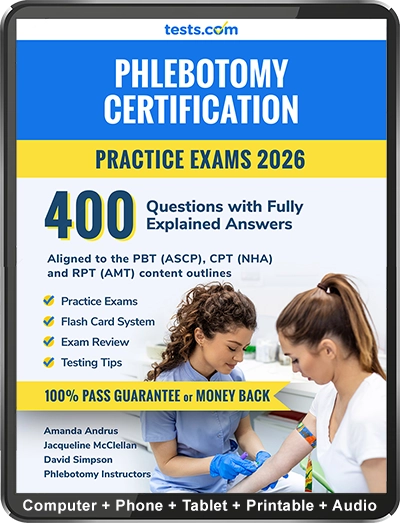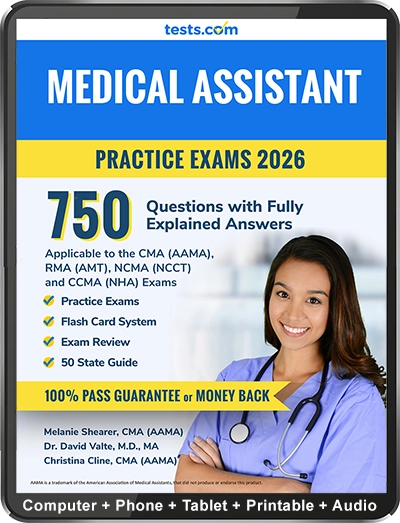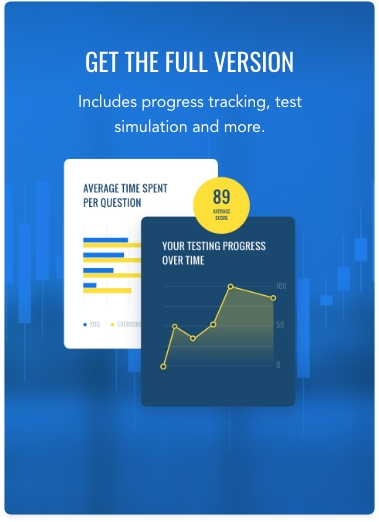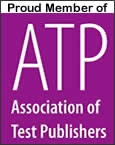2026 Edition
Phlebotomy Practice Test
Take this free Phlebotomy practice test to study for your phlebotomy certification exam.
While certification is not required to work as a phlebotomist in most states, certification can be required by an employer and be essential for promotion. Those working as certified nursing aides, medical assistants, registered nurses and emergency medical technicians can find the phlebotomy certification essential to their career.
A number of organizations offer certification as a phlebotomist or phlebotomy technician: The American Society of Clinical Pathology, the National Health career Association, the American Medical Technologists, The National Phlebotomy Association and The National Center for Competency Testing.
The phlebotomy certification exams cover subjects such as the Circulatory System, Infection Control and Safety, Orders and Equipment Selection, Patient ID and Site Preparation, Specimen Collections, Processing and Transport, Problems and Corrections and Professional Issues.
To prepare for your Phlebotomy Certification exam, use our 400 questions Phlebotomy Practice Test. It is written by phlebotomy instructors. Our interactive test platform allows you to simulate the exam. Take as many practice tests as you need. There's no time limit or recurrent charges.
For more information and test prep on Phlebotomy certification, see the Phlebotomy Study Guide.
Study Online Instantly

Click to Save 50% Now





